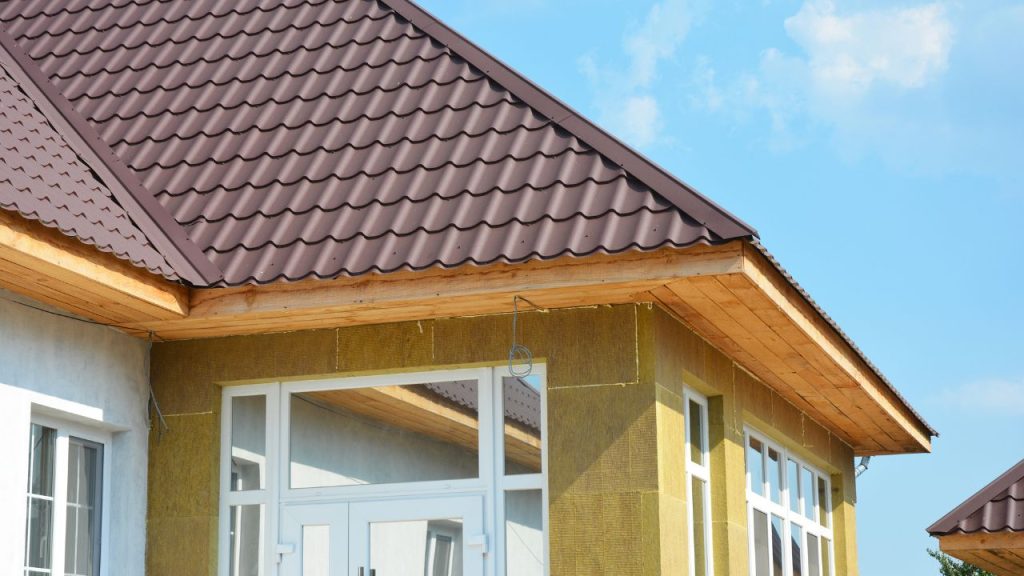Insulating your home is a smart investment that not only enhances comfort but also significantly reduces energy bills. However, the cost of house insulation in Ireland can vary widely depending on several factors, including the type of insulation, the size of your home, and the specific areas you’re looking to insulate.
In this blog, we’ll explore the various insulation options available and provide a detailed overview of what you can expect to pay. Whether you’re considering upgrading your attic, walls, or floors, understanding the costs involved will help you make an informed decision and ensure your home is energy-efficient and cosy year-round.
Let’s look at the costs and benefits of different insulation types to help you find the best fit for your home in Ireland.
What Are the Types of Insulation and Their Costs?

Insulating your home effectively can significantly reduce energy costs and increase comfort. Here’s a brief overview of the various types of insulation available in Ireland, along with their costs:
1. Attic Insulation
Attic insulation is one of the most cost-effective ways to increase the energy efficiency of your home. It helps maintain temperature stability throughout the house, reducing heating and cooling costs.
- Type: Fibreglass, cellulose, or spray foam
- Cost: €10 to €30 per square metre
2. Wall Insulation
Wall insulation can be installed in various ways, including cavity wall insulation and solid wall insulation, depending on the type of walls in your home.
- Type: Cavity, solid (internal or external)
- Cost:
- Cavity wall insulation: €10 to €20 per square metre
- Solid wall insulation: €70 to €90 per square metre (internal or external)
3. Floor Insulation
Floor insulation is another way to prevent heat loss, especially in older homes where floors can be a significant source of cold air infiltration.
- Type: EPS boards, polyurethane boards
- Cost: €25 to €30 per square metre
4. Roof Insulation
Proper roof insulation not only prevents heat loss but also helps in maintaining an even temperature throughout the home, particularly in houses with living spaces under the roof.
- Type: Spray foam, rigid foam boards
- Cost: €30 to €50 per square metre
5. Pipe Insulation
Insulating pipes is essential in preventing heat loss from hot water pipes and avoiding freezing in cold water pipes.
- Type: Foam lagging
- Cost: €1 to €3 per metre
What are the Key Factors Affecting Insulation Expenses?

When planning to insulate your home in Ireland, several key factors can influence the overall cost. These factors will help you budget more accurately for the best insulation options for your home.
Here are the primary elements that affect insulation expenses:
1. Types of Insulation
The chosen insulation material significantly impacts cost. For instance, spray foam is generally more expensive than fibreglass or cellulose because of its higher R-value (a measure of thermal resistance) and the complexity of installation.
2. Area of Installation
The size of the area to be insulated directly affects the cost. Larger areas require more materials and more labour, which increases the overall expense. Conversely, smaller projects might cost more per square metre due to minimum service charges or setup times.
3. Labour Costs
Labour costs can vary depending on the complexity of the installation and the expertise of the contractors. Specialised installations in hard-to-reach areas, like a sloped attic or a heritage building with unique architectural features, can significantly increase labour costs.
4. Condition of Existing Insulation
If your home already has insulation that needs to be removed or replaced, this can add to the project’s total cost. Removal of old materials and preparation for new insulation (such as repairing damaged areas or updating ventilation) must be factored into the budget.
5. Geographical Location
Your home’s location within Ireland can also play a role in the cost of insulation. Prices for materials and labour can vary between regions due to differing availability of supplies and the number of service providers in the area.
By considering these factors, you can better plan your insulation project and ensure that you achieve the highest return on your investment through reduced energy costs and improved home comfort.
How Much Grant is Available for Insulating Your Home in Ireland?
In Ireland, homeowners can take advantage of various grants provided by the Sustainable Energy Authority of Ireland (SEAI) to help reduce the cost of insulating their homes, making energy efficiency more accessible.
Here’s an overview of the grants available for different types of insulation:
| Insulation Type | Grant Amount | Description |
| Attic Insulation | Up to €1,200 | For insulating your attic to recommended levels. |
| Cavity Wall Insulation | Up to €1,000 | For filling cavity walls with insulating material. |
| Internal Wall Insulation | Up to €2,400 (apartments, mid-terrace) Up to €4,500 (semi-detached, detached) | For applying internal insulation to existing walls. |
| External Wall Insulation | Up to €2,750 (apartments, mid-terrace) Up to €4,500 (semi-detached) Up to €6,000 (detached) | For applying insulation to the exterior walls of a home. |
How do I Qualify for SEAI Grants?
To qualify for these grants, homeowners must meet the following criteria:
- The home must have been built and occupied before 2011.
- Homeowners must use a contractor from SEAI’s registered list.
- The installation must comply with the required standards and be inspected by an SEAI inspector, if selected.
Additional Benefits
In addition to direct grant funding, participating in the SEAI grant program can provide homeowners with benefits such as:
- Reduced energy costs through improved home energy efficiency.
- Enhanced home comfort and indoor climate control.
- Increased property value with upgraded energy efficiency ratings.
Applying for these grants involves completing an application through the SEAI website, where homeowners can also find more information on eligibility, required documentation, and the application process.
By utilising these grants, homeowners can significantly offset the cost of insulating their homes, making this essential upgrade more accessible and affordable.
Conclusion
Investing in proper home insulation is crucial for enhancing energy efficiency and comfort in your Irish home. With various types of insulation to choose from and key factors affecting costs, it’s important to make informed decisions.
Additionally, SEAI grants can significantly reduce the financial burden of these improvements. If you’re looking to upgrade your home’s insulation, consider New Century for top-class insulation services. Fill out our contact form, and we guarantee a response within 2–4 hours. If you need urgent assistance, don’t hesitate to call us.
Let New Century help you make your home energy-efficient and comfortable.
FAQs
What is the average cost to insulate a house in Ireland?
The average cost can range from €1,200 to €5,000, depending on the type of insulation and the size of the area being insulated.
Can I get a grant for house insulation in Ireland?
Yes, the SEAI provides grants for various types of insulation, including attic, wall, and floor insulation, which can significantly reduce the overall cost.
How long does it take to install insulation?
Installation time varies but generally takes from a few hours to several days, depending on the complexity and scope of the project.
Is insulation worth the investment?
Absolutely, insulation improves home energy efficiency, reduces heating costs, and increases the comfort and value of your home.
What is the most effective type of insulation?
Spray foam insulation is highly effective due to its high R-value and air-sealing properties, but the best type depends on your specific home needs and structure.
How do I apply for an insulation grant in Ireland?
Homeowners can apply through SEAI’s website, where they must use a registered contractor and ensure their home meets the eligibility criteria outlined by SEAI.

